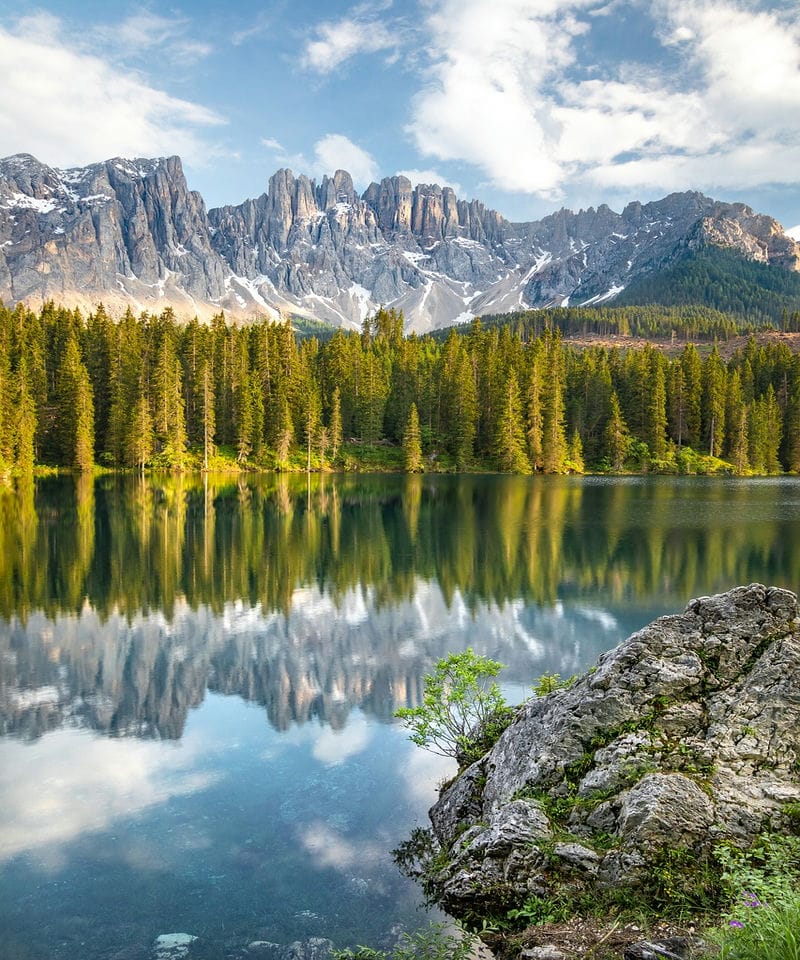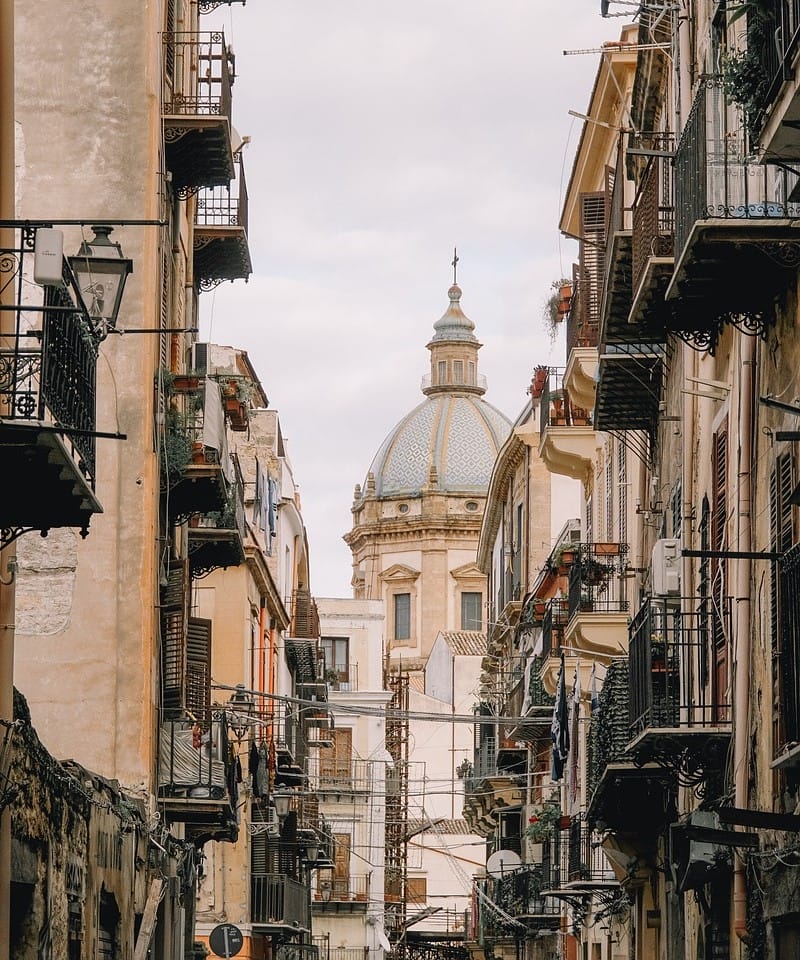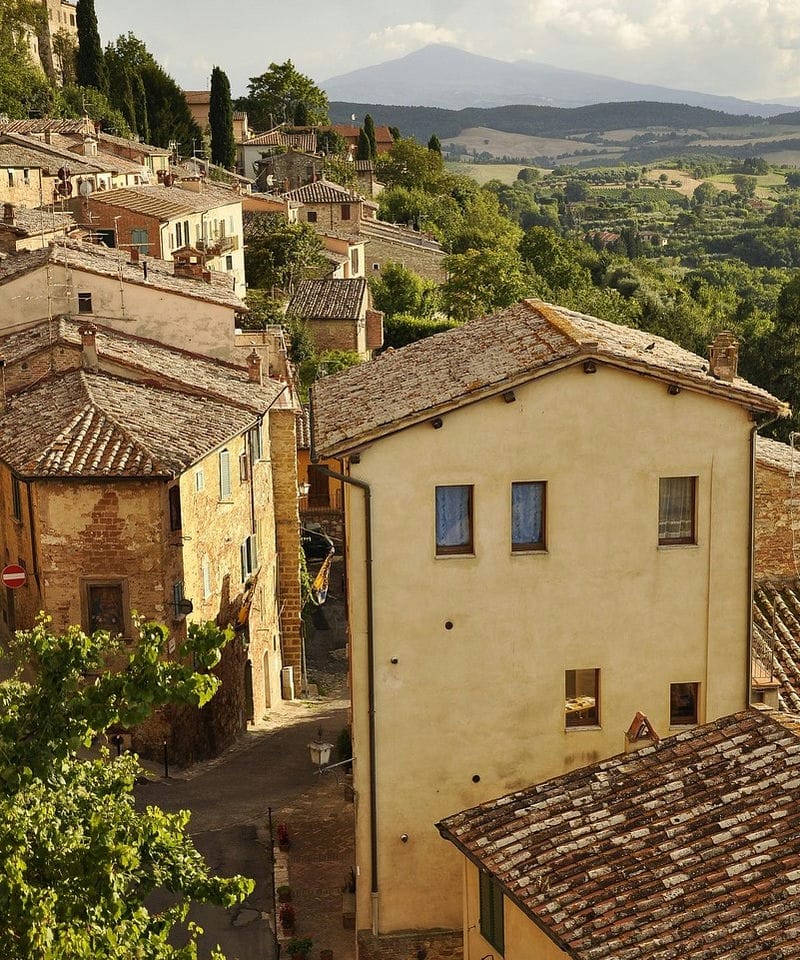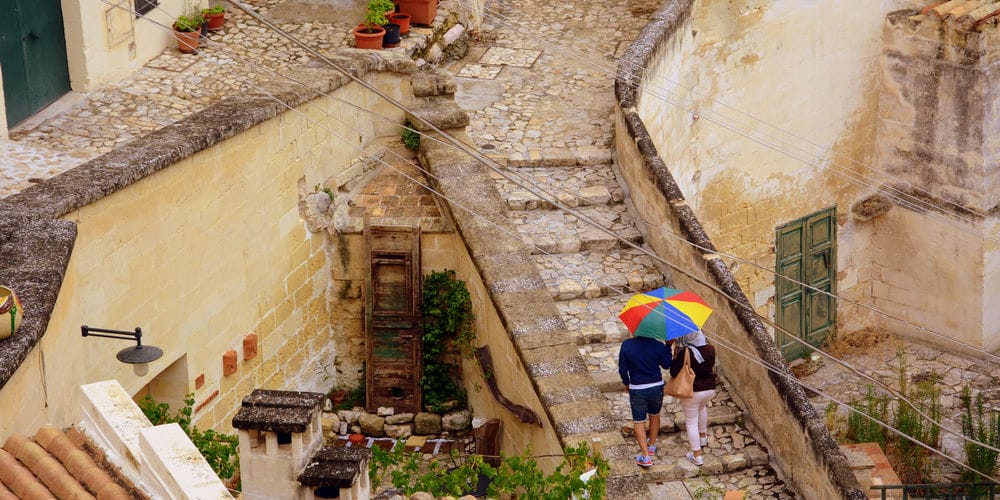
Valley of Gods, Sicily: Ancient Wonders and Scenic Landscapes
Key Takeaways
- The Valley of the Temples showcases Greek architecture on Sicily's southern coast.
- Visitors can explore numerous historic temples amidst beautiful landscapes.
- The area offers a rich history, local cuisine, and nearby accommodations.

Nestled on the southern coast of Sicily in southern Italy, the Valley of the Temples is a mesmerizing blend of history and beauty.
This archaeological treasure spotlights ancient Greek architecture amidst the serene Mediterranean landscape.
As one of Sicily's star attractions, the Valley of the Temples serves as a window into the profound influence of ancient Greeks on the island.
Visitors can explore the remarkable ruins that narrate tales of past civilizations and empires (mainly the Roman Empire).
From the towering Temple of Concordia to the majestic Temple of Juno, each structure is a testament to the skill and artistry of ancient builders.
Historical Background Of The Valley Of Gods Sicily

The Valley of the Temples in Agrigento, Sicily, echoes the grandeur of ancient Greek civilization.
This UNESCO World Heritage site stands as a testament to historical periods marked by Greek settlements and Carthaginian conflicts, as well as being a key archaeological site brimming with classical wonders.
Origins And Ancient Greek Influence
Agrigento, known as Akragas in ancient times, was established in 580 BC by settlers from Rhodes and Crete.
Situated on Sicily's southern coast, its location offered strategic advantages despite challenging cliffs.
The Greeks built remarkable temples dedicated to gods like Demeter and Persephone, showcasing profound artistic skill and architectural innovation.
Under the influence of Magna Graecia, the region flourished culturally and economically, integrating aspects of Greek mythology, including the reverence for Asclepius, the Greek god of medicine.
Key Historical Events And Periods
Throughout its history, the Valley of the Temples witnessed significant events including sieges by the Carthaginians. These confrontations, particularly during the Second Punic War, defined the site's resilience.
Despite invasions, the city maintained its prominence, symbolized by its majestic structures.
Over centuries, the region encapsulated the dynamic shifts in power and culture, transitioning through Greek, and later Roman, control.
Its designation as a UNESCO World Heritage site underscores its enduring historical significance.
Archaeological Significance And Discoveries
The valley's archaeological heritage includes extensive ancient city walls and notable temples that vividly illustrate ancient classical culture.
Discoveries in this area highlight its importance, with ongoing excavations uncovering insights into past civilizations.
The eight temples, some in ruins and others well-preserved portray an era of grandeur and religious devotion.
These sites provide crucial evidence about the ancient world, societal structures, and beliefs. Their preservation informs both historical understanding and broader perspectives on ancient Greek and Roman contributions to architecture and urban planning.
How To Get To The Valley Of Gods Sicily

Nearest Airports And Transportation Hubs
Three main airports serve as gateways to the Valley of Gods: Palermo (PMO), Catania (CTA), and Trapani (TPS).
Palermo's international airport, Falcone Borsellino, is about 2 hours away by car and offers various international connections.
Catania's Vincenzo Bellini Airport is slightly farther, taking roughly 2.5 hours. Meanwhile, Trapani provides closer access, around 1.5 hours by car, primarily catering to domestic and European flights.
Each of these airports offers car rental services, taxis, and shuttle buses to help visitors continue their journey.
Driving Directions And Public Transportation Options
Driving offers flexibility and stunning views of Sicily's countryside.
From Palermo, take the A29 motorway towards Agrigento. Head south on the SS115 to reach the Valley of Gods.
Public transportation is another option. From Palermo or Catania, regional trains operate to Agrigento. However, these services may require a transfer and can take up to 3-4 hours.
Buses are also available from these major cities, offering a direct yet comfortable ride. Keep in mind travel schedules can vary, so check times in advance.
Tips For Navigating Local Roads
Local roads around the Valley of Gods can be narrow and curvy, with occasional traffic congestion.
Driving during daylight offers better visibility for navigating these routes.
Parking close to the site can fill up during peak times; it's wise to arrive early or consider parking a little farther away and walking.
Road signage might be in Italian, so a GPS or a reliable map app is handy.
Additionally, some routes may not have frequent gas stations, so it's good to ensure the vehicle is fueled before departure.
Best Time To Visit The Valley Of Gods Sicily

The best time to visit depends largely on climate preferences, the seasonal tourist flow, and personal itineraries. Understanding these factors can help ensure a more enjoyable trip.
Seasonal Weather Patterns
Sicily enjoys a Mediterranean climate with hot, dry summers and mild, wet winters.
Summer (June to August) is the warmest period, with temperatures often exceeding 30°C (86°F). These months are ideal for those who enjoy the heat.
Spring (March to May) and Autumn (September to November) offer milder temperatures, ranging from 15°C to 25°C (59°F to 77°F).
These periods are often preferred for sightseeing, as the weather is pleasant for walking and exploring the ruins. Winter can be cooler and wetter, with temperatures averaging 10°C to 15°C (50°F to 59°F).
Tourist Seasons And Off-Peak Times
July and August are peak tourist months, when crowds are larger, and prices for accommodation tend to surge.
Those planning a Sicily itinerary during these months should prepare for a bustling environment.
Off-peak periods, like late autumn and early spring, present a quieter atmosphere with fewer crowds.
For a day trip, visiting during off-peak times allows a more relaxed exploration of the Valley.
While visiting during peak months, consider arriving early in the morning or later in the evening when fewer visitors are present.
Recommended Visiting Times For The Best Experience
For an ideal experience, visiting in May or September is recommended. These months combine comfortable weather with less tourist traffic.
Tickets are often cheaper during off-peak times, making the experience more budget-friendly.
Planning a visit on the first Sunday of the month could be advantageous, as entrance is often free.
Always check current opening hours as they can vary, particularly due to seasonal changes.
Exploring early in the morning or closer to sunset can provide beautiful lighting for photography and a more serene visit.
Main Attractions In The Valley Of Gods Sicily

Temple Of Concordia
The Temple of Concordia stands as one of the most well-preserved ancient Greek temples in the world.
Built in the 5th century BC, this temple showcases the iconic Doric style. Known for its grandeur, it measures about 40 meters in length and 16 meters in width.
The temple is celebrated not only for its preservation but also for its location offering breathtaking views over the valley.
Today, the Temple of Concordia serves as a well-visited landmark, drawing tourists and history enthusiasts from around the globe to appreciate its architectural beauty and historical significance.
Temple Of Juno
The Temple of Juno, also known as Tempio di Giunone, is dedicated to the goddess Hera.
Positioned on a hill overlooking the valley, this temple offers spectacular views and a promising sunset backdrop. Its construction dates back to around 450 BC featuring a Doric design.
Despite suffering damage over the centuries, the structure retains much of its original grandeur. Nearby, visitors can find remains of altars used for sacrifices.
The Temple of Juno is an iconic part of the archaeological park, inviting exploration and admiration from visitors.
Temple Of Heracles
The Temple of Heracles, or Temple of Hercules, is the oldest known structure in the Valley of the Temples. It dates back to the late 6th century BC.
Although much of the temple is in ruins, eight columns still stand, offering a glimpse into its former majesty.
Dedicated to the hero Heracles, this magnificent temple holds great historical importance. The simple yet powerful design reflects the early Greek architectural style.
Visitors to the site can visualize the impressive size and construction techniques of ancient times.
Temple Of Castor And Pollux
The Temple of Castor and Pollux also referred to as the Temple of the Dioscuri, is one of the most iconic symbols of the valley.
Although only a few columns of this temple remain, it represents the rich historical tapestry of the area.
The temple features a blend of ancient mythology and Sicilian history, dedicated to the twin gods popular in Greek and Roman mythology.
The surviving structure offers a fascinating centerpiece for understanding the cultural significance of this archaeological site.
Other Notable Ruins And Landmarks
Beyond the main temples, numerous other ruins and landmarks enrich the Valley of the Temples.
The necropolis, offering insights into burial practices, and the Tomb of Theron, a striking pyramid-shaped monument, are must-see sites.
Visitors can also explore the Paleo-Christian necropolis and the Pietro Griffo Archaeological Museum for a deeper dive into the past.
Each site contributes to the valley's status as a treasure trove of ancient history, offering a plethora of learning and exploration opportunities.
Activities And Experiences In The Valley Of Gods Sicily

Guided Tours And Self-Guided Exploration
In the Valley of Gods, guided tours provide insights into the area's history and its ancient temples.
Knowledgeable guides explain the stories behind structures and historical events, enhancing the visitor's experience.
For those who prefer exploring at their own pace, self-guided tours allow flexibility. Information plaques and audio guides are available to help navigate the site.
The Kolymbethra Garden is a highlight, featuring olive trees and Mediterranean flora, offering a quiet retreat.
Hiking And Walking Trails
Hiking and walking trails in the Valley of Gods allow visitors to explore the landscape.
Paths lead through ancient ruins, providing scenic views and a chance to connect with the area's history.
Some trails offer glimpses of the nearby Mediterranean Sea.
These paths are well-marked, making them accessible for all ages.
Comfortable shoes are recommended due to uneven terrain.
Shorter walks and longer hikes are both available, catering to different interests and fitness levels.
Cultural Events And Festivals
Cultural events and festivals in the Valley of Gods showcase Sicily's rich traditions.
These events often feature music, dance, and local food, offering a taste of the island's culture.
Scala dei Turchi, famous for its white cliffs, is a nearby site often included in local celebrations.
Throughout the year, various festivities occur around the temples, drawing both locals and tourists.
They provide a unique opportunity to experience Sicilian life amid a historical backdrop.
Accommodation Options Near The Valley Of Gods Sicily

When visiting the Valley of Gods in Sicily, there are several accommodation options ranging from luxurious hotels to quaint bed-and-breakfasts.
Hotels And Resorts In Agrigento
Agrigento offers a selection of hotels known for their comfort and proximity to the Valley of Gods.
Villa Aurea stands out, providing luxury lodgings with views of the historic ruins.
These hotels often feature amenities like pools, spas, and fine-dining restaurants.
Staying here allows guests to explore the best-preserved archaeological sites and parks conveniently.
Options vary from budget-friendly to upscale choices, meeting a wide range of guest needs.
Bed And Breakfasts And Guest Houses
For a more personal experience, bed and breakfasts in Agrigento offer cozy stays.
These accommodations often reflect local culture and hospitality. Guests can enjoy homemade breakfasts with regional specialties.
Many guest houses are family-run and provide insights into Sicilian life.
They are usually situated closer to residential areas, giving visitors a more authentic experience.
This choice suits travelers looking for comfort paired with local charm.
Dining And Local Cuisine

Traditional Sicilian Dishes To Try
Traditional Sicilian cuisine includes countless delights rooted in rich cultural history.
Key dishes feature fresh seafood, seasonal vegetables, and traditional grains.
Arancini, deep-fried rice balls with ragù or mozzarella, and caponata, a sweet and sour eggplant dish, are staples.
Don't miss out on pasta con le sarde, made with sardines and wild fennel, or cassata, a sweet ricotta cake.
The use of local ingredients like citrus, almonds, and tomatoes highlight Sicily's vibrant produce.
Many dishes reflect the island's historical influences, combining Arabic, Spanish, and Italian elements to create a unique culinary identity.
Cannoli, crispy pastry shells filled with sweet ricotta, and granita, a semi-frozen dessert, showcase the sweet side of Sicilian cuisine.
Recommended Restaurants And Eateries
For a memorable dining experience near the Valley of the Temples, visitors can choose from a variety of options.
At Re di Girgenti, enjoy lunch with a view overlooking the Valley.
Villa Athena Resort offers a terrace dining experience with traditional Sicilian cuisine.
La Scala Ristorante, located in a historic building, is perfect for those seeking a premium and historic atmosphere.
Mamma Caura in Marsala provides a charming setting with a focus on excellent local wines.
Canna e Pisci in Catania presents modern twists on Sicilian classics.
Each restaurant features authentic, flavorful dishes that highlight the rich culinary traditions of Sicily and cater to diverse tastes.
Tips For Visiting The Valley Of Gods Sicily

What To Pack And Wear
- When visiting the Valley of Gods, the weather is a critical factor to consider.
- Summers can be extremely hot, with temperatures reaching above 100°F (37°C).
- Visitors should pack light, breathable clothing, a hat, and sunglasses to protect against the sun.
- Comfortable walking shoes are essential due to uneven terrain.
- A water bottle is crucial, as staying hydrated is necessary.
- Sunscreen will protect against sunburns.
- Bringing a camera or smartphone ensures visitors can capture the breathtaking views and significant historical sites.
Safety Tips And Precautions
Safety is important for a visit to be smooth and enjoyable.
- The site covers a large area, so having a map or a guidebook is beneficial.
- Timing your visit to avoid the hottest parts of the day can prevent heat exhaustion.
- Watching out for uneven paths and marked sections keeps visitors safe from falls.
- Visitors should also respect any guidelines or restricted areas to avoid hazards and preserve the archaeological site.
Respecting The Historical Site And Local Customs
Respect for the Valley of Gods goes beyond just observing its beauty.
- It's crucial to follow all posted signs and instructions to preserve the site's integrity.
- Staying on designated paths ensures no damage is caused to the environment or ancient ruins.
- Understanding and respecting local customs enhances the visit. This includes speaking politely, not touching the artifacts, and maintaining a respectful demeanor.
- Engaging with local people respectfully and learning a few basic phrases in Italian can lead to a more meaningful experience.
- Tickets for the site, available at either entrance, can be purchased using cash or card.
- Familiarity with the opening hours ensures ample time to explore the site thoroughly while avoiding the crowds.
Final Thoughts

The Valley of the Agrigento Temples in Sicily is a remarkable testament to ancient civilizations.
Its impressive Greek temples, including the Temple of Olympian Zeus, stand as a reminder of the rich history, ancient Greek art, and cultural influences of the region.
Visitors can explore the grandeur of structures like the Temple of Concordia, renowned for its exceptional preservation.
Each temple in the valley offers a glimpse into the architectural prowess of ancient times.
Situated amidst a stunning landscape, the valley overlooks the beautiful Mediterranean Sea.
This combination of nature and history makes it a unique destination.
The site continues to captivate archaeologists and tourists alike.
Its enduring beauty and historical importance make it a must-see in Sicily.












